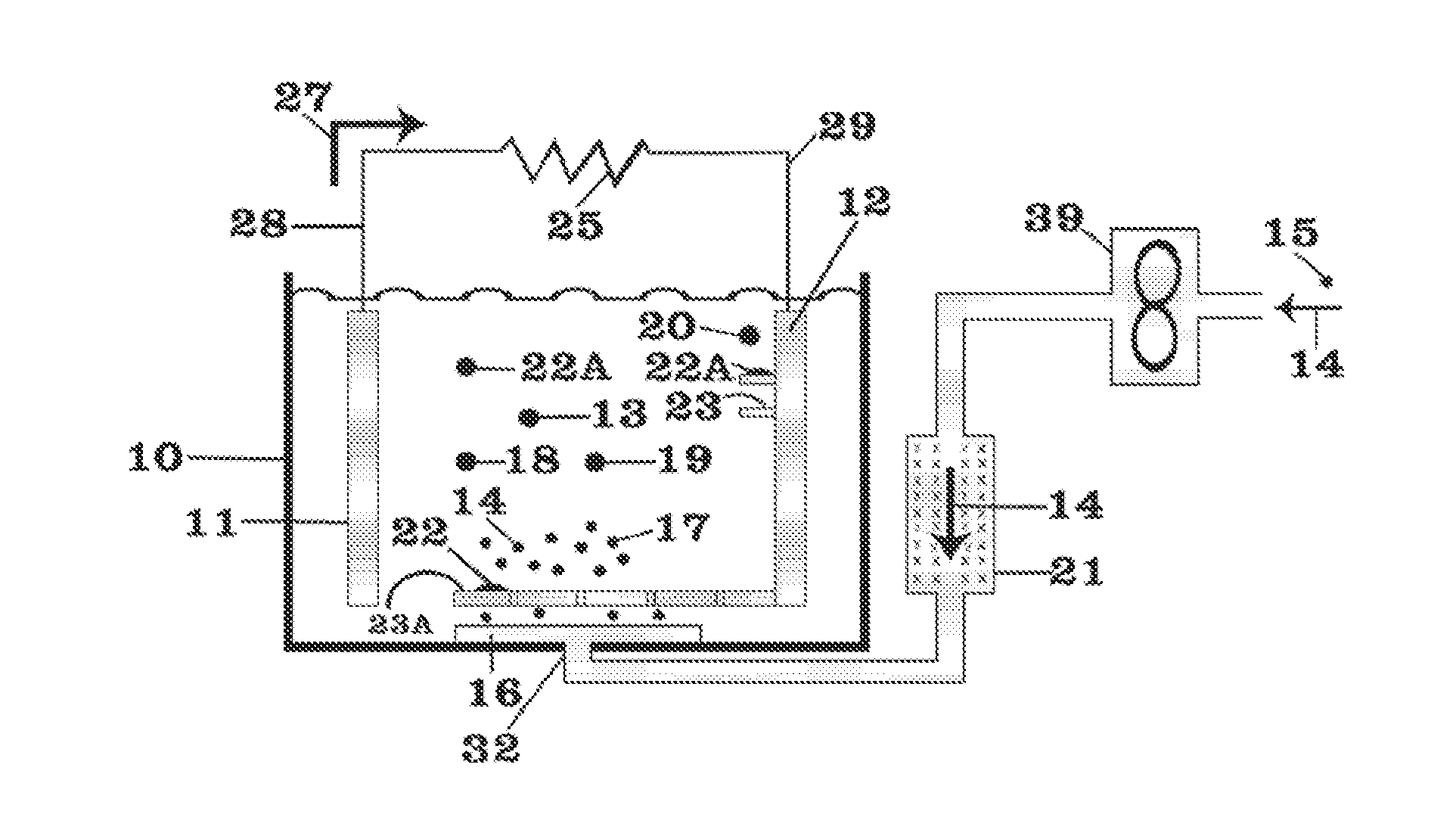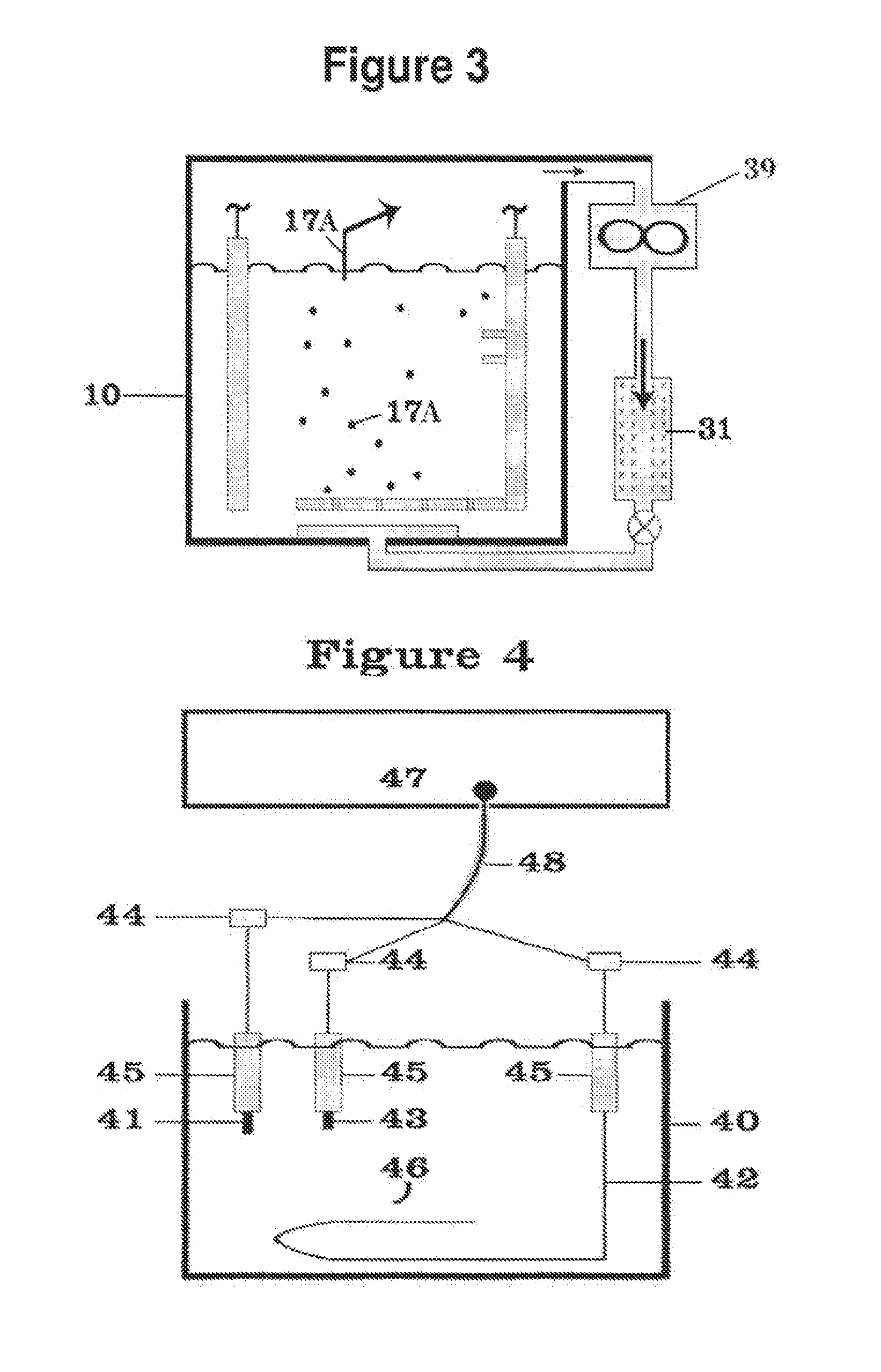Lithium-air battery for electric vehicles and other applications using molten nitrate electrolytes
a technology of lithium-air batteries and electric vehicles, which is applied in the direction of batteries, cell components, electrochemical generators, etc., can solve the problems of slow electrochemical kinetics for oxygen reduction, low efficiency of battery reaction, and commercial development of lithium-air batteries
- Summary
- Abstract
- Description
- Claims
- Application Information
AI Technical Summary
Benefits of technology
Problems solved by technology
Method used
Image
Examples
Embodiment Construction
[0046]FIG. 1 shows a battery assembly or cell 10 with two electrodes 11, 12, an anode 11 and cathode 12, and a lithium nitrate-potassium nitrate eutectic mixture serving as the electrolyte 13. The battery 10 is operating in discharge mode. Air 14 from an external source 15, after being dried in a desiccator 21, enters the cell through an access opening or air inlet 32 and then passes through a diffuser 16 whereby the air 14 or oxygen 17 mixes with the electrolyte 13. Preferentially, the diffuser 16 as the source of air 14 or oxygen 17 within the cell is located to cause the air 14 or oxygen 17 preferentially to rise through the electrolyte 13 in the vicinity of the cathode 12 to facilitate the reduction of the oxygen 17 in the air 14 at the cathode 12.
[0047]As described above, the oxygen 17 present in the electrolyte 13 is believed to also react with nitrite ions 18 converting such ions into nitrate ions 19. The nitrate ions 19, in turn, react at the cathode to release a doubly nega...
PUM
 Login to View More
Login to View More Abstract
Description
Claims
Application Information
 Login to View More
Login to View More - R&D
- Intellectual Property
- Life Sciences
- Materials
- Tech Scout
- Unparalleled Data Quality
- Higher Quality Content
- 60% Fewer Hallucinations
Browse by: Latest US Patents, China's latest patents, Technical Efficacy Thesaurus, Application Domain, Technology Topic, Popular Technical Reports.
© 2025 PatSnap. All rights reserved.Legal|Privacy policy|Modern Slavery Act Transparency Statement|Sitemap|About US| Contact US: help@patsnap.com



